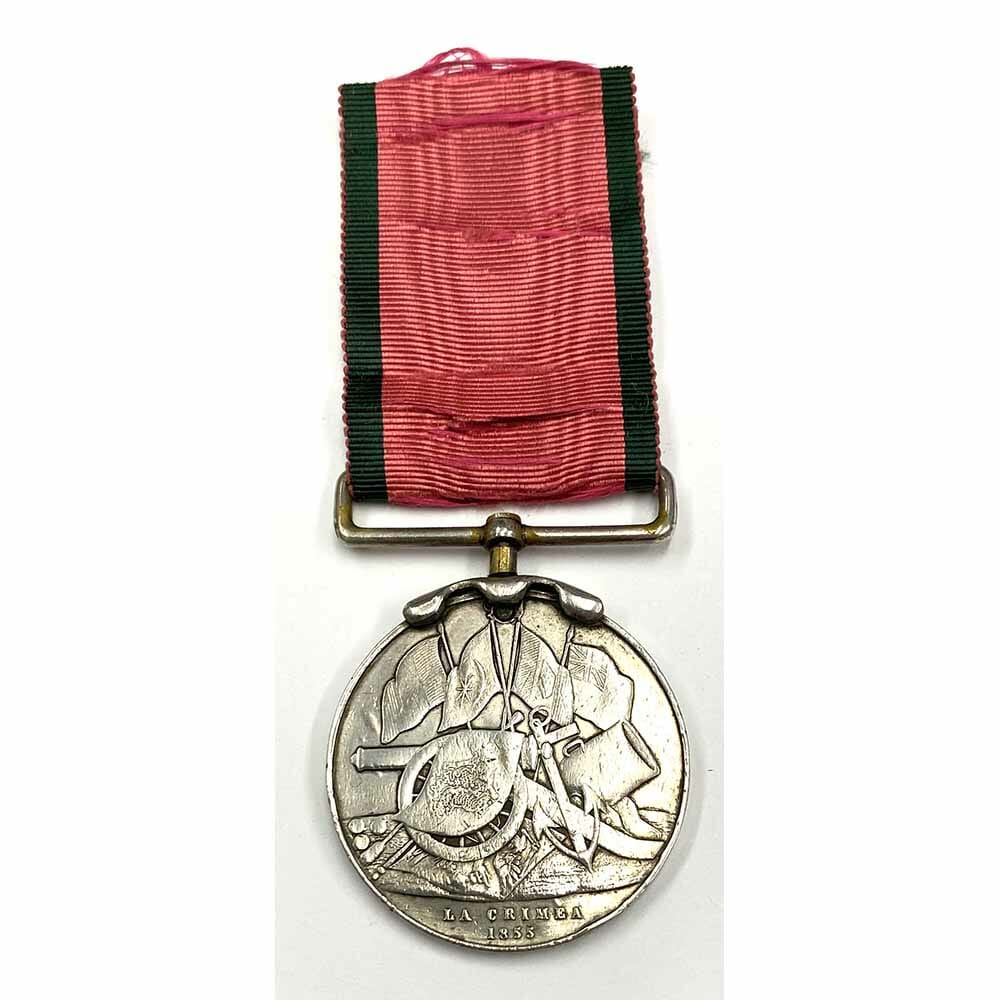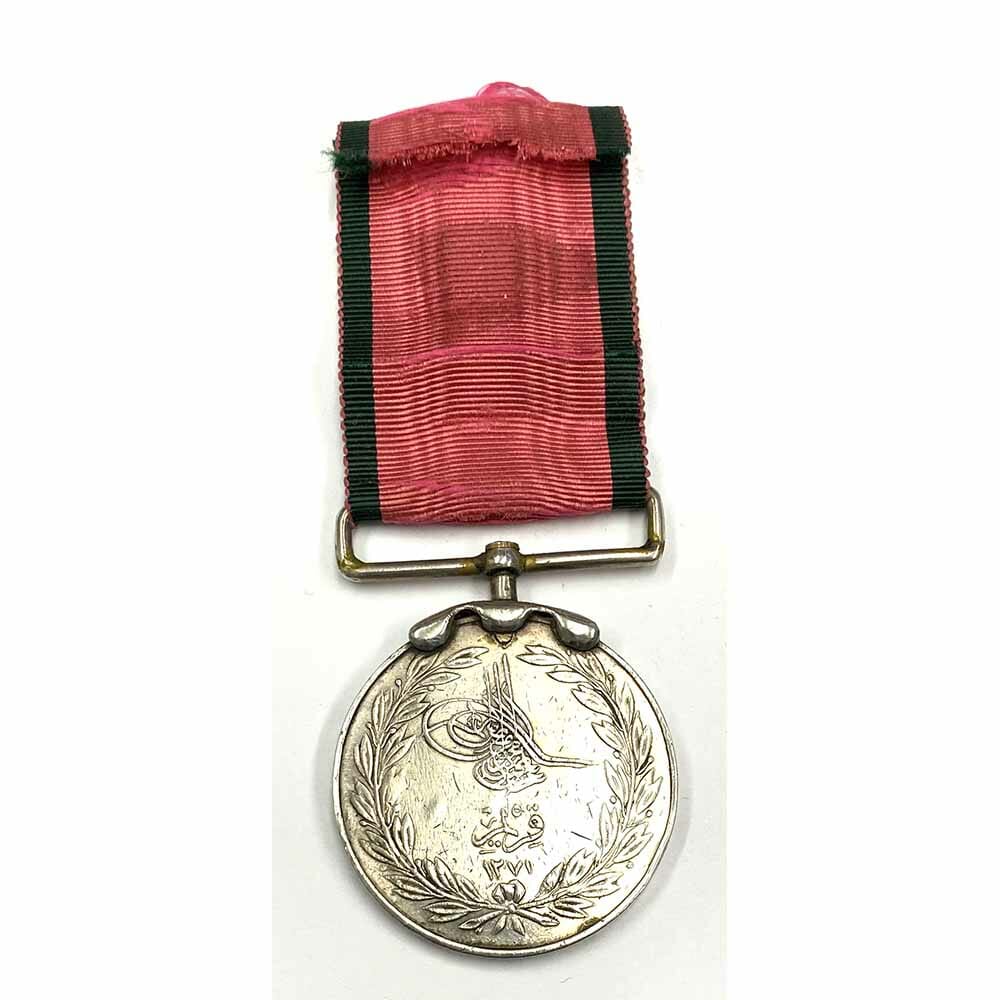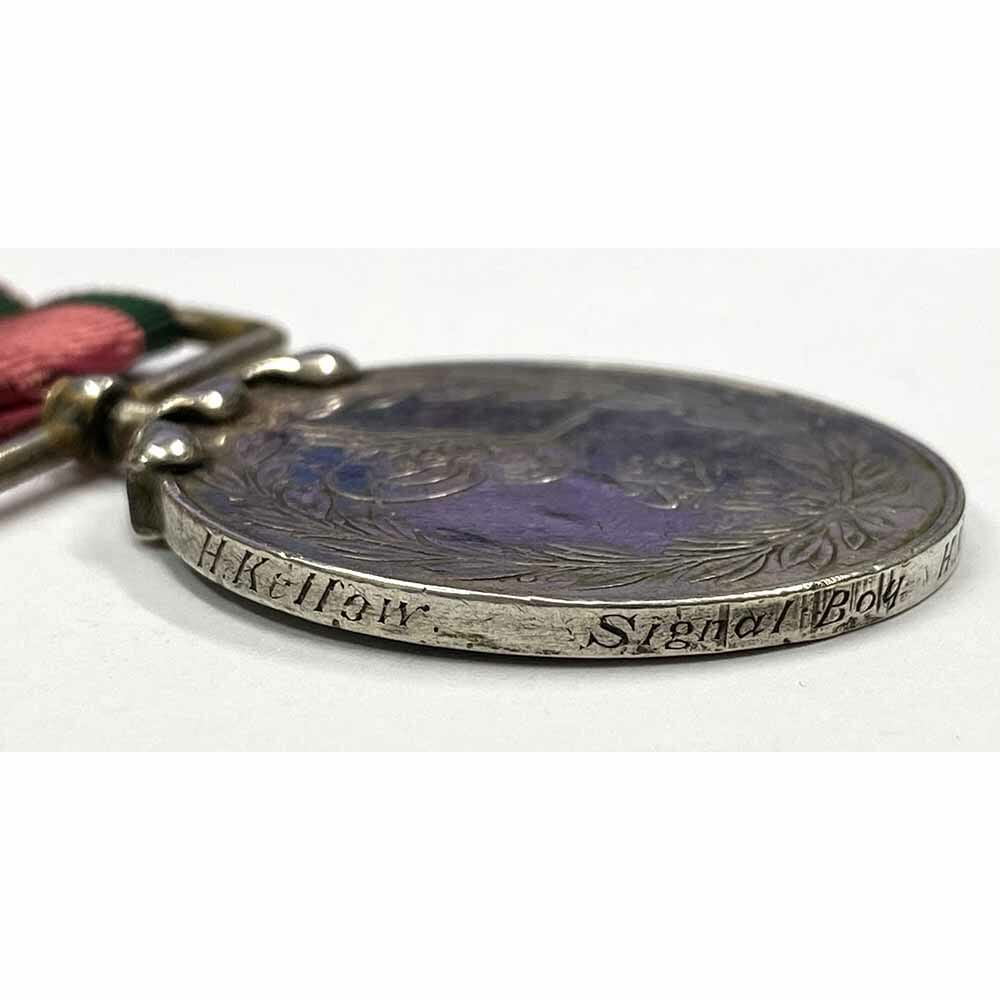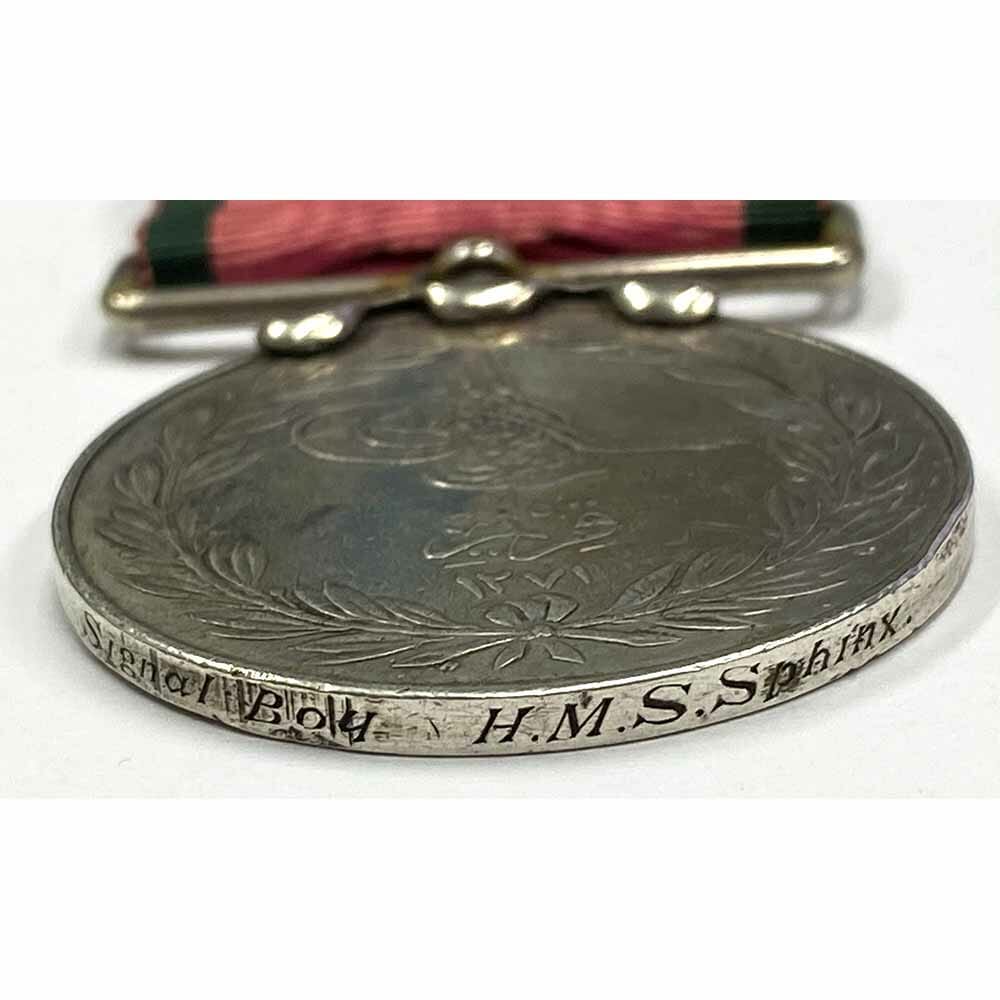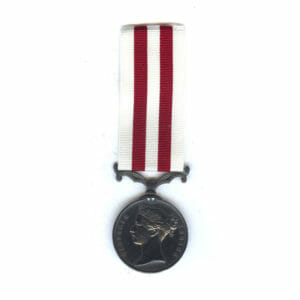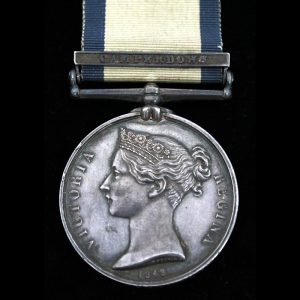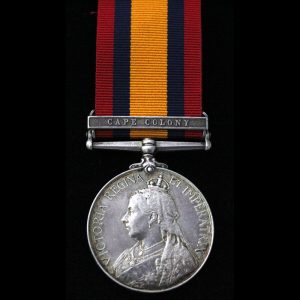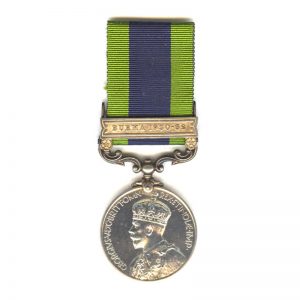Description
Turkish Crimea Medal, Sardinian issue, fitted with an unusual swivelling silvered suspension claw and bar, engraved in nice contemporary style to “H. Kellow Signal Boy HMS Sphinx”
Herbert Kellow was a Boy 2nd Class on board HMS Sphinx during the Crimean War and had his British Crimean War Medal delivered on board the ship which would have been issued unnamed.
A most interesting fellow, born on the Anniversary of Waterloo and named after the Duke of Wellington who his father fought under at the Battle. He was still a child when he entered the Navy on a training ship, and was 15 when he joined the Man of War, Sphinx, to fight in the Crimean War and Baltic Sea, it took him only a few years to reach Gunnery Captain.
Having a long Naval Career including the distinction of serving and training along side the Duke of Edinburgh, the Duke of Saxe-Coburg and Gotha, Alfred, on board HMS Galatea. After 25 years of service he then continued the only way he could, by training the next generations, spending the next 25 years as Chief Instructor of the training ship Shaftesbury, having 3,000 young sailors pass under his tuition. Naturally he followed up his retirement with an extra 5 years of service with Coast Guard.
The fascinating story of his long and adventurous life is in the Warwick Advertiser 19th June 1926, when he died at the age of 85:
“DEATH OF A CRIMEAN VETERAN, MR H.W. KELLOW, OF HARBURY
The death has occurred at his home in Binswood End, Harbury, of Mr Herbert Wellington Kellow, a veteran of many adventures.
Aged 85 years, he was born at Warminster on the anniversary of the Battle of Waterloo. His father fought there under the Duke of Wellington, and in commemoration the son was given the name of the famous leader.
At a very early age, Mr Kellow went on a training ship, and in 1855, the 2nd year of the Crimean War, he was sent on a Man of War, the “Sphinx”, to the Baltic as second Signal Boy.
He was the only 15 years of age, but his devotion to duty and good conduct brought him early promotion, and in a few years he had attained the rank of gunnery captain.
While serving in the Navy, Mr Kellow and the late Duke of Edinburgh were in training together on board “H.M.S. Galatea”.
Mr Kellow travelled to all parts of the globe while in the service, chiefly in the tropics, and had many thrilling experiences.
After 25 years in the Navy. He was appointed Chief Instructor on board the training ship ‘Shaftsbury’ at Gravesend. That position he held for 24 3/4 years, during which time no fewer than 3,000 boys passed under his tuition. He then served another 5 years in the Coast Guard Service.
He was presented with a medal for good conduct and long service, and was the proud possessor of three more medals for his service in the Crimean War. At different periods he was the recipient of many valuable presents, including two costly peices of plate and two handsome timepieces.
He also received flattering testimonials from officers in the service.
His most treasured gift was that subscribed for, and presented to him by the boys of the ‘Shaftesbury’; and other souvenirs of his long service included complimentary letters from the late Admiral Lord Charles Beresford.
Before coming to Harbury, Mr Kellow spent some years at Leamington and Wellesbourne. Though rather reserved with strangers, he was always kind and courteous, and to friends he would tell very interesting stories of his past experience, his nautical expressions being very amusing. He was always fond of children, and gardening and reading, and loved a game of dominoes.
While in the Navy, he acquired many useful accomplishments, including colour sketching on canvas, the favourite subject being, of course, that which had affected his life, the sea and ships. He enjoyed excellent health until a few years ago, when his heart began to trouble him, but the cause of his death was bronchitis following a chill.
He outlived 2 wives, and of a family of 2 sons and 3 daughters only the sons survive him.
The funeral took place at Harbury, and the vicar, Rev P W Daimpre, who officiated, spoke of the noble example Mr Kellow had set, of his loyalty to his God and Country, and whose faith never faltered up to the end.
The coffin which was of oak with brass engraved fittings, and was covered with the Flag he so much loved, was borne to the grave by 6 members of the Royal Warwickshire Regiment, and a Bugler sounded The Last Post over the grave.”
Leamingston Spa Courer, 14th November 1924, the attendance on Remembrance Sunday:
“ARMISTIC CELEBRATIONS, SERVICE OF REMEMBRANCE AT HARBURY, BISHOP’S INSPIRING ADDRESS…..
…..Over a hundred ex-servicemen, wearing their medals and decorations, occupied the nave of the church, which was full to overflowing. In the congregation was Mr Herbert Kellow, R.N., wearing his medals of the Crimea and Baltic – as proud an old Salt as ever walked the deck….”
